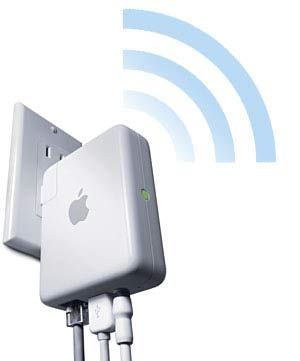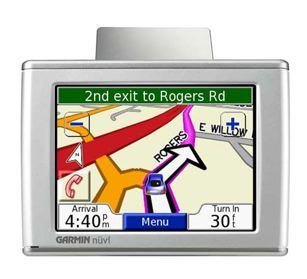 I’ve just returned from a three-week trip to Australia with my wife Jane. In addition to enjoying the beauty and hospitality of the people, it was a chance to try out a number of gadgets and services designed for the road to see what worked well and what didn’t.
I’ve just returned from a three-week trip to Australia with my wife Jane. In addition to enjoying the beauty and hospitality of the people, it was a chance to try out a number of gadgets and services designed for the road to see what worked well and what didn’t.
I brought along my computer, a GPS unit, a BlackBerry, a Samsung BlackJack II cell phone, a Novatel Ovation MC950D USB Modem, and my Apple iPhone.
I also brought along a few cameras and devices for keeping all these devices charged. And I managed to fit it all into one carry-on, helped by wearing a ScottEVest jacket with plenty of pockets for gadgets.
POWERING UP
At each hotel I set up a little charging station to charge my devices each night. I used Belkin’s Mini Surge Protector with USB Charger ($25). It turns one outlet into three, plus adds two USB charging connections. The compact device swivels 360 degrees to fit everywhere and provides surge protection as well.
For adapting to the Australia’s power receptacles I used the Kensington Travel Plug Adapter ($25) that lets a U.S. AC plug fit into any outlet in the world.
WHAT WORKED, WHAT DIDN’T
 While the notebook was obviously the most useful of the products, hooking up to the Internet was expensive, typically $1 per minute or $20-$30 per day at the hotels for a wired Ethernet connection. In the hotel rooms, I’d plug an Apple Airport ($99) (with a plug converter) into an outlet and the Ethernet cable into it. That provided me with a Wi-Fi hotspot in the room, allowing me to use the computer untethered. (The Airport is simply a miniature Wi-Fi router that works with all computers.)
While the notebook was obviously the most useful of the products, hooking up to the Internet was expensive, typically $1 per minute or $20-$30 per day at the hotels for a wired Ethernet connection. In the hotel rooms, I’d plug an Apple Airport ($99) (with a plug converter) into an outlet and the Ethernet cable into it. That provided me with a Wi-Fi hotspot in the room, allowing me to use the computer untethered. (The Airport is simply a miniature Wi-Fi router that works with all computers.)
I tried using the Novatel modem in Sydney to avoid the hotel connection, but ran into trouble. I went into a number of cellular stores to try to buy a prepaid SIM card for data, much like the prepaid cards readily available for voice, but none could provide it without a lot of hassles. One store required downloading special software for registering that they couldn’t guarantee would work on a Novatel modem. Another had nothing that would work on a Mac. And it turned out that, even if it could be made to work, the cost was even more expensive than the hotel Internet.
The most valuable device turned out to be my BlackBerry Curve with its unlimited international data plan from AT&T ($70/month for data) and built-in GPS. I was able to connect nearly everywhere, with a few exceptions such as parts of the Daintree Rainforest, and a small section of Kangaroo Island. But otherwise my email came streaming in and I was able to make use of two excellent applications the entire time.
The first was Google Maps using their free application that works on many brands of mobile phones. I was able to pinpoint my location to within a hundred feet, access maps and local information in seconds, and even view satellite maps of the area. It even worked in Uluru in the middle of the desert. It was eerie waking around Ayers Rock while seeing an aerial view of it on the screen.
Another free application that’s recently become available for the BlackBerry is the Wall Street Journal Mobile Reader. It’s designed to access much of the content of the WSJ including the latest headlines and news stories. That allowed me to keep up with all the bad news at home, such as my bank going bankrupt!
While I brought my iPhone and used it as my pocket calendar and address book, I never turned on the cell service due to the high cost for accessing data. Until they offer an all you can use data plan such as the BlackBerry uses, it’s too risky to use it for email.
The TruPhone VOIP application built into my iPhone couldn’t connect as easily as it does from home. Why? The iPhone often failed to recognize the Wi-Fi network created by the Airport adapter.
 I found there’s still a need for a full-fledged GPS. I brought along my Garmin Nuvi with an SD card of Australian maps. It proved to be a godsend when driving from Adelaide to the Barossa Valley to visit some wineries. It was challenging enough to stay on the left side of the road, let alone navigate. I loved when the Nuvi reminded me to go around roundabouts from the left side.
I found there’s still a need for a full-fledged GPS. I brought along my Garmin Nuvi with an SD card of Australian maps. It proved to be a godsend when driving from Adelaide to the Barossa Valley to visit some wineries. It was challenging enough to stay on the left side of the road, let alone navigate. I loved when the Nuvi reminded me to go around roundabouts from the left side.
I used a BlackJack II Samsung AT&T 3G phone for making calls. And while I don’t look forward to seeing the bill, coverage was terrific and the phone worked well. It never fails to amaze me how much better cellular works in countries outside of the U.S. The BlackJack is one of the most popular phones running the Microsoft Mobile operating system, but reminded me how cumbersome the operating system still is.
MAKING MEMORIES … AND FILLING UP MEMORY CARDS
I took along three cameras, a Pentax K20D DSLR and a Panasonic Lumix DMC-TZ5K for the times I wanted to travel lightly; my wife used a Pentax W60, their new ultra compact that works under water. I’ll be reporting on the latter shortly, but they all worked well.
I brought along six 2 MB Kingston SD cards, selected because they were the least expensive name brand on Amazon ($8 each) at the time of purchase. I loaded all my images onto the computer each night and retained the images on the cards as my backup. I carried the cards with me or locked them in the room safe.
Now my job is to sort through the 1,500 images and create a slide show that others will want to watch. Unfortunately there’s no gadget or software to shortcut this process. Maybe I’ll convince Jane to do it!
By Phil Baker. Originally published in the San Diego Transcript. Visit Phil’s blog at blog.philipgbaker.com.
Check out more of Phil Baker’s reviews and advice in our Travel Gadgets & Gear section.












